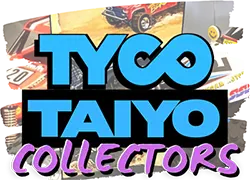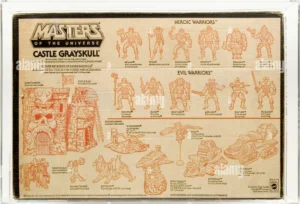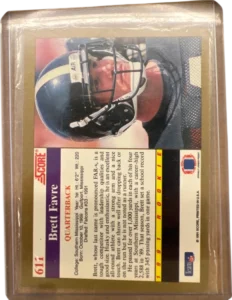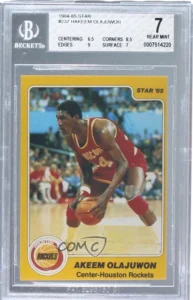1993 Hudson Soft Super Bomberman

Running this archive is expensive! To help pay these bills, I use the eBay Partner Network, so if you click on an eBay link and buy, I earn a small commission at no cost to you.
VALUE / PRICE HISTORY
Average Price
$36.78
Highest Price
$312.53
| Date | Price | Condition | Type | Title |
|---|---|---|---|---|
| 2025-08-13 | $159.98 | Used | Buy | Lot 6 Bomberman 1 2 3 4 5 W set Nintendo Super Famicom SFC Japan JP w/Box Tested |
| 2025-08-11 | $44.99 | Used | Buy | Super Bomberman SNES, 1993 Authentic Nintendo Game Tested & Working. |
| 2025-08-11 | $57.95 | Used | Buy | Lot 5 Super Bomberman 1 2 3 4 5 set SFC Nintendo Super Famicom Hudson Tested |
Prices in USD. While all care is taken, there is no guarantee on accuracy of this data.
ITEM REVIEW
The Super Bomberman was a multiplayer maze game that was manufactured by Hudson Soft and subsequently released to the public in the year 1993.

Background
The game came into existence during a specific period characterized by Hudson Soft’s efforts to refine its approach to local multiplayer experiences, building upon the foundational elements established by its earlier Bomberman titles. The original Bomberman, which is known as Bakudan Otoko in Japan, had made its debut a decade earlier on various platforms such as the MSX and NEC PC-8801, featuring gameplay that occurred on a single screen where players strategically placed bombs in order to navigate through mazes. By the time 1993 rolled around, the series had evolved into a significant staple within Hudson’s catalog, and Super Bomberman represented its transition to the advanced 16-bit SNES hardware.
The development of this game coincided with Hudson’s All-Japan Caravan Festivals, which are seasonal events where the company actively promoted new games through competitive high-score challenges. While it is important to note that Super Bomberman was not explicitly designed for these particular festivals, its release timing aligned quite closely with the ninth Hudson Super Caravan that took place in the summer of 1993—a marketing push that emphasized the importance of communal gaming experiences. The SNES version was initially exclusive to Japan and North America, and a European launch followed later that same year under the banner of Sony Electronic Publishing, which made the decision to retain the Bomberman name rather than opting for earlier regional rebrands such as Dynablaster.
Features



Super Bomberman retained the core mechanics that had been established by its predecessors: players navigated grid-based arenas, placing bombs in order to destroy obstacles and defeat enemies while simultaneously avoiding their own explosions. The SNES iteration introduced smoother sprite animations and a significantly wider color palette, which contributed to giving the blocky environments a more polished appearance when compared to the earlier 8-bit entries. New power-ups included the Remote Control, which allowed for delayed detonation of bombs, and the Fire Suit, which granted players temporary immunity to flames—additions that subtly shifted strategic considerations without completely overhauling the existing formula.
Its most notable advancement was the introduction of four-player support via the Super Multitap accessory, which was a first for the series. This mode, which was accessible through the Battle Mode option, transformed the game into a chaotic party staple, with up to four players competing fiercely to be the last one standing. The single-player mode offered a total of eight stages, each culminating in a boss fight against antagonists such as Carat Diamond and Sirius Silver—robotic foes that exhibited distinct attack patterns. Level designs incorporated various warp zones and hidden passages, encouraging exploration despite the time pressure imposed by the ticking bomb fuses.
- Four-player Battle Mode requiring the Super Multitap accessory
- Eight single-player stages featuring themed bosses
- Power-ups available: Fire Up, Bomb Up, Remote Control, Fire Suit
- Destructible environments containing hidden item boxes
Popularity and Legacy
While it cannot be classified as a record-breaking seller, Super Bomberman managed to gain traction primarily through word-of-mouth recommendations, particularly among friend groups that were drawn to its multiplayer chaos. It was included in IGN’s retrospective of top SNES games published in 2006, where it was cited for its accessibility and high replay value. The game’s success ultimately led to the development of four direct sequels on the SNES, each iterating on the established formula with new power-ups, characters, and stage gimmicks—though none replicated the significant impact of the original’s multiplayer innovation.
Hudson’s emphasis on communal play significantly influenced later titles such as Hi-Ten Bomberman, which was a 1994 arcade exclusive specifically designed for 10-player battles at the All-Japan Caravan Festivals. The broader Bomberman franchise became a cultural touchstone, although its relevance began to wane after Hudson’s absorption into Konami in 2012. Konami’s stewardship resulted in a series of mixed releases, such as the 2017 edition of Super Bomberman R for the Nintendo Switch—a throwback that incorporated modern online play features but faced criticism for uneven performance at launch.

Video Reviews and Commercials
I apologize, but the transcript you provided appears to be incomplete or nonsensical (“ah ah ah”). Without a proper video transcript, I cannot generate a summary. Could you please provide the full transcript of the video?
Availability and Collectability
Physical copies of Super Bomberman are moderately scarce in the current market, with complete-in-box (CIB) editions fetching prices that range between $150 and $300 USD in 2023, depending on the condition and the specific regional packaging. Loose cartridges generally sell for a price range of $40 to $60, which is a lower price point when compared to rare SNES titles but is still higher than common releases. The game saw a re-release in 2004 on J2ME mobile phones in Europe; however, this particular version lacked multiplayer features and is now considered obsolete due to the ongoing shifting trends in mobile platforms.
Emulation has played a significant role in preserving the game’s accessibility, with Nintendo including it in the Switch Online SNES library back in 2020. Collectors often prioritize the North American and Japanese releases, as the European version’s later launch and Sony branding render it a curiosity within the community. The Super Multitap accessory, which is necessary for four-player sessions, has also become a secondary collectible, with used units being sold for a price range of $20 to $40. While it is not as highly sought-after as first-party Nintendo titles, Super Bomberman’s legacy as a pioneer in the multiplayer gaming genre ensures a steady demand among retro enthusiasts.
Like it? Then you might also like...
DISCUSSION
Information here is to the best of my knowledge at the time of writing, and is frequently updated and improved as I learn more. Contact Me for Feedback or Corrections. Gimme80s.com is not responsible for inaccurate information or commentary, media, or links posted by 3rd parties.
















































